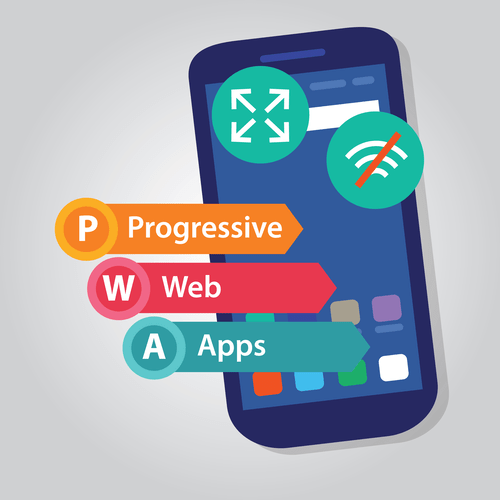GitHub Actions CI/CD is free for public repositories, and pay as you go for private repositories, but of course, only works with GitHub. GitHub also provides an on-premises server for those wanting more control. GitHub Enterprise is delivered as a virtual appliance that can run in high availability mode if desired. Methodology was that the system had to be perfectly visualized in advance . The methodology also provided poor visibility into the progress of teams, which could claim progress on key milestones without having to provide concrete evidence.
Some of these originated as straightforward server-side applications but went on to become successful commercial products in their own right. These tools originally stored their pipeline configuration in a stateful way on the server side via the application’s GUI. More recently, however, declarative “pipelines as code” picked up from remote source repositories have become the norm.
Integration testing tutorial
Because the testing phase is automated, it encourages developers to work as quickly as possible on what they do best – development. On the other end of our proverbial bridge we have continuous delivery. As organizations create their own SBOMs and ingest SBOMs from their vendors, the aggregation, enrichment, and management of these artifacts are going to be an increasingly important part of operationalizing them. For example, adding vulnerability exploitability exchange information will be an increasingly important part of contextualizing SBOMs. Many other moving parts are involved, including secrets management, dependency mapping, and management, CI/CD pipeline security, effective repository management, and more. Most experts agree that security teams will be hard-pressed to find everything they need from one vendor.
- A/B Testing—A/B testing is a method used to test the functionality of an application, such as changes to the user experience.
- Instead of waiting for IT to provision resources, organizations can simply request and receive them on-demand.
- It lets you manage pipelines as code and deploy your projects to production via CD tools.
- GitLab CI can help you test and build projects and deploy your builds.
- Automated software delivery pipelines help organizations respond to market changes better.
TriggerFirstly, there needs to be an automation in place that “tells” the CI/CD pipeline that new code has been committed. In practice, this is achieved by using a repository manager such as Assembla, Bitbucket or GitHub. These tools allow multiple developers to work on the same codebase without creating conflicts with one another’s code.
Red Hat legal and privacy links
Developing a CI/CD pipeline is a standard practice for businesses that frequently improve applications and require a reliable delivery process. Once in place, the CI/CD pipeline lets the team focus more on enhancing applications and less on the details of delivering ci/cd pipeline monitoring it to various environments. Many teams operating CI/CD pipelines in cloud environments also use containers such as Docker and orchestration systems such asKubernetes. Containers allow for packaging and shipping applications in a standard, portable way.
In addition to frequently checking code, developers will manage features and fixes on different timelines, and can then control which code and features are ready for production. Continuous integration is the process of automating and integrating code changes and updates from many team members during software development. In CI, automated tools confirm that software code is valid and error-free before it’s integrated, which helps detect bugs and speed up new releases. The “CI” in CI/CD always refers to continuous integration, which is an automation process for developers. Successful CI means new code changes to an app are regularly built, tested, and merged to a shared repository. It’s a solution to the problem of having too many branches of an app in development at once that might conflict with each other.
Faster Delivery of New Features and Bug Fixes
CI is the process where developers regularly integrate their code changes into a central repository. Each integration is then automatically tested and verified, promoting high-quality code and early bug detection. On the other hand, CD takes this a step further by automating the delivery of these tested code changes to predefined infrastructure environments, ensuring seamless and reliable software updates. With this automated build, testing, and deployment process, CI/CD practices enable teams to release software faster and more reliably, making it a cornerstone of DevOps culture. A CI/CD pipeline is essential for any software development or operations team that wants to automate the OpenText™ software delivery process.
The build stage may also include some basic testing for vulnerabilities, such as software composition analysis and static application security testing . Even the most wildly optimistic deployment candidates are rarely committed to production without reservation. Automation is particularly critical in the CI/CD test phase, where a build is subjected to an enormous array of tests and test cases to validate its operation.
CI/CD Tools
The below image describes how Continuous Integration combined with Continuous Delivery helps quicken the software delivery process with lower risks and improved quality. Poorly configured environments can result in failed tests and deployments, slowing down the overall CI/CD process. This step also uses built-in variables to ensure that the pipeline checks out the exact code described in the triggering https://www.globalcloudteam.com/ commit. Codefresh pipelines are organized within projects, which can be thought of as folders or directories that group related pipelines. For instance, a project could contain all pipelines that package and deploy different microservices for an application. The project name can be anything you like, with the most common example being the name of the application that the pipelines build and deploy.

The CI/CD system examines the dependencies and assembles the steps on demand. This can produce great efficiencies in larger projects that have many interrelated components. The CI/CD system, rather than blindly building a dependency, can cache the dependency so that it is only built once, regardless of the number of dependent components. Yet this has posed a security problem for software delivery pipeline owners looking to keep all these new attack vectors under control.
CI/CD Pipeline
As mentioned previously, part of good CI hygiene includes pulling changes from the mainline branch to your local development machine regularly to ensure your branch doesn’t get too far out of sync. You should select this status check in your branch protection rule to help enforce this practice. This check prevents anyone from merging a pull request until the branch is up to date. Once you have enforced pull requests before merging code to the main branch, check the box to require approvals.

Setting up trusted artifact repositories and container registries is a fundamental part of the infrastructure for establishing ‘secure guardrails’ for developers. Offering centralized sources of approved components is a proactive way to head off problems and establish sound governance of what goes into an organization’s software. Some of them are more traditional application security tools that are advancing to be more developer-friendly.
What is Continuous Deployment?
All development stakeholders should be involved early on in the implementation process. Developers should provide input since they will be the main users of a product. Remember that CI/CD is about getting a software application into the hands of a customer that is better and done quicker than before. Organizations that adopt CI/CD find their productivity improves significantly. The trick is coming up with a deployment strategy that works for the individual organization. Rather than sitting in a queue, code actually makes it out into the real world.